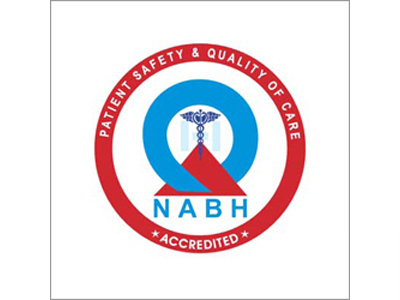Women are 50% to 60% more susceptible to a range of eye disorders compared to men, many of them influenced by biological, hormonal, and lifestyle factors. Understanding these factors is essential for timely detection and treatment, ensuring women maintain optimal eye health throughout their lives.
Key Eye Disorders Affecting Women:
1. Dry Eye Syndrome: Women are twice as likely as men to develop dry eye syndrome. About 60% of people affected by dry eye syndrome are women. The condition is particularly common in post-menopausal women due to hormonal changes.
Risk Factors: Estrogen and progesterone play a significant role in tear production, and hormonal fluctuations, particularly during pregnancy, menstruation, and menopause, contribute to a higher incidence of dry eye in women.
2. Glaucoma: Known as the "silent thief of sight," Women are about 1.5 times more likely than men to develop glaucoma, especially as they age. According to a study in Ophthalmology, around 60% of individuals with glaucoma are women.
Risk Factors: Women’s longer life expectancy increases their risk of developing glaucoma, and post-menopausal changes in hormone levels, especially a decrease in estrogen, may be a contributing factor.
3. Cataracts: Cataracts are more common in women, as they age. According to the World Health Organization, 55% of all cataract surgeries worldwide are performed on women. Women are about 1.5 times more likely to develop cataracts than men.
Risk Factors: Hormonal changes after menopause, as well as longer life expectancy, are major contributors to the higher risk of cataracts in women. Environmental factors such as smoking and sun exposure also play a role.
4. Diabetic Retinopathy: Women with diabetes are 1.3 times more likely than men to develop diabetic retinopathy, which damages retinal blood vessels, potentially leading to vision loss.
Risk Factors: Pregnancy-related conditions like gestational diabetes and pre-eclampsia also increase the risk of retinal complications in women.
5. Age-Related Macular Degeneration (AMD): Women are 1.5 to 2 times more likely to develop AMD than men, particularly after the age of 65. According to the National Eye Institute, two-thirds of individuals with AMD are women.
Risk Factors: The higher prevalence in women may be attributed to their longer life expectancy, combined with risk factors like hypertension, smoking, and genetics. Additionally, estrogen's influence on vascular health may also contribute to the increased susceptibility in women.
6. Autoimmune Disorders: Women are 2 to 9 times more likely than men to develop autoimmune diseases that affect the eyes, such as Sjögren's syndrome and uveitis. Studies indicate that 90% of people with autoimmune diseases affecting the eyes are women.
Risk Factors: Autoimmune diseases, which disproportionately affect women, can lead to conditions such as dry eye disease, uveitis, and other inflammatory eye disorders.
7. Retinal Vein Occlusion (RVO): RVO, which leads to sudden vision loss or blurriness, is more common in women. Women have a slightly higher risk of developing retinal vein occlusion (RVO) than men. Some studies indicate that RVO occurs in women around 1.5 times more frequently than in men, especially among those over the age of 65.
8. IIH (Idiopathic intracranial hypertension): It is caused when high pressure around the brain causes symptoms like vision changes and headaches. 'Idiopathic' means the cause isn't known, 'intracranial' means in the skull, and 'hypertension' means high pressure. IIH is significantly more common in women than in men. Studies show that women are affected by IIH 4 to 6 times more than men, especially among women of childbearing age.
Approximately 80% to 90% of patients with IIH are women, particularly those who are overweight or obese. The condition most commonly affects women in their 20s to 40s, though it can occur in people of any age.
Additional Considerations:
• Pregnancy-Related Changes: Hormonal shifts during pregnancy can lead to temporary vision changes, including blurred vision or changes in glass prescription.
• Ocular Migraines: Women are 3 times more likely than men to experience ocular migraines, with about 25% of women of childbearing age affected, compared to around 10% of men.
Risk Factors: Hormonal fluctuations related to menstruation, pregnancy, and menopause are significant contributors to the higher frequency of ocular migraines in women.
Prevention and Management:
Women should prioritize eye health through regular eye examinations, maintaining a healthy lifestyle, wearing UV-protective sunglasses, and managing chronic conditions like diabetes and hypertension. Additionally, women experiencing dry eyes should consider using lubricating eye drops to alleviate discomfort.
Dr. Sowjanya V, Consultant Ophthalmologist at the L V Prasad Eye Institute, Kode Venkatadri Chowdary campus at Vijayawada emphasizes, “Women face unique risks regarding eye health. Early detection, proper management, and raising awareness about these conditions are key to preserving vision and quality of life.'
By understanding these conditions and taking preventive measures, women can ultimately safeguard their eye health.
About LVPEI:
Established in 1987, with the vision,' to create excellent and equitable eye care systems that reach all those in need,' the L V Prasad Eye Institute (LVPEI), a comprehensive eye health facility, is a World Health Organization Collaborating Centre for Prevention of Blindness.
In pursuance of this vision, LVPEI clinicians and scientists work at the cutting edge of eye research. Through its five-tier 'Eye Health Pyramid’ model, it has till date offered over 36.89 million services (3 crores 68 lakh services), with more than 50% entirely free of cost, irrespective of the complexity of care needed. For further information, visit the Institute’s website, www.lvpei.org.


